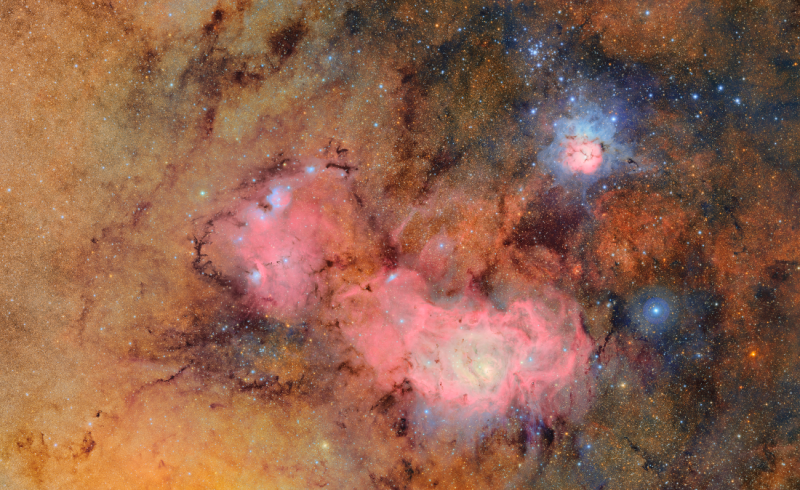
|
Credit & Copyright: NSFBDOE Vera C. Rubin Observatory
Explanation:
This
interstellar skyscape
spans over 4 degrees across crowded starfields
toward the constellation Sagittarius and the central Milky Way.
A First Look image captured at the new
NSFBDOE Vera C. Rubin Observatory,
the bright nebulae and star clusters featured
include famous stops on
telescopic
tours
of the cosmos:
Messier
8 and
Messier
20.
An expansive star-forming region over a hundred light-years across,
Messier 8 is also known as the Lagoon Nebula.
About 4,000 light-years away the Lagoon Nebula
harbors a remarkable cluster of young, massive stars.
Their intense radiation and stellar winds energize
and agitate this cosmic lagoon's
turbulent depths.
Messier 20's popular moniker is the Trifid.
Divided into three parts by dark interstellar dust lanes, the
Trifid Nebula's
glowing hydrogen gas creates its dominant red color.
But contrasting blue hues in the colorful
Trifid are due to dust reflected starlight.
The Rubin Observatory
visited the Trifid-Lagoon field
to acquire all the image data during parts of four nights (May 1-4).
At full resolution, Rubin's magnificent
Sagittarius
skyscape
is 84,000 pixels wide and 51,500 pixels tall.
|
January February March April May June July August September October November December |
| |||||||||||||||||||||||||||||||||||||||||||||||||||||||
NASA Web Site Statements, Warnings, and Disclaimers
NASA Official: Jay Norris. Specific rights apply.
A service of: LHEA at NASA / GSFC
& Michigan Tech. U.
Based on Astronomy Picture
Of the Day
Publications with keywords: M 20 - M 8
Publications with words: M 20 - M 8
See also:
